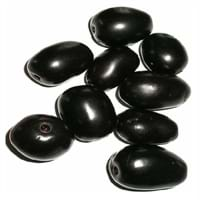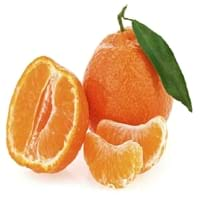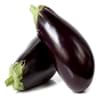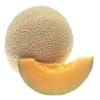Health Benefits
Cancer prevention, Heart care, Increase in haemoglobin, Regulates Blood Sugar, Ulcer prevention
Cancer prevention, Heart care, Increases metabolic rate, Reduces stress
General Benefits
Boosts immune system, Digestive aid, Fights against infections, Strengthens bones
Boosts immune system, Controls blood pressure, Digestive aid, Eye care, Helps in weight loss
Skin Benefits
Brightens and lightens complexion, Skin cleansing, Skin rejuvenation, Treatment of acne, Treatment of dark spots
Brightens and lightens complexion, Treatment of acne, Treatment of dark spots
Hair Benefits
Promotes longer and healthier hair, Protects hair
Promotes longer and healthier hair, Protects hair
Allergy Symptoms
Abdominal pains, NA
Abdominal pains, Breathing difficulty, Coughing, Diarrhea, Drop in blood pressure, Fainting, Runny nose, Skin rash, Sneezing, Swelling of mouth, tongue or lips, Vomiting
Side Effects
Decrease in blood sugar levels, Allergic reaction, Throat irritation, Throat swelling, Possibly unsafe during pregnancy
Allergic reaction
Best Time to Eat
As a snack in the late afternoon, Don't consume at night and before bed, Eat the fresh ones, avoid mixing with any other foods, don't eat after meal., Morning time (before lunch), Strictly avoid empty stomach
As a snack in the late afternoon, Don't consume at night and before bed, Eat the fresh ones, avoid mixing with any other foods, don't eat after meal., Morning time (before lunch)
Vitamin A (Retinol)
Not Available
Vitamin B5 (Pantothenic Acid)
Not Available
Vitamin B9 (Folic acid)
Not Available
Vitamin C (Ascorbic Acid)
Vitamin E (Tocopherole)
Not Available
Vitamin K (Phyllochinone)
Not Available
Phytosterol
Not Available
Calories in Fresh Fruit with Peel
Not Available
Calories in Fresh Fruit without Peel
Not Available
Calories in Frozen Form
Not Available
Not Available
Calories in Dried Form
Not Available
Not Available
Calories in Canned Form
Not Available
Not Available
Type
Tree fruit, Tropical
Citrus
Season
Monsoon, Summer
Autumn
Varieties
Ram Jarnun and Paras
Clemenules or Nules and Nadorcott
Color
Black, Magenta, Purple
Orange
Inside Color
Purple
Orange
Taste
Astringent, Sweet
Sweet, Tangy, Tart
Origin
Bangladesh, India, Indonesia, Malaysia, Nepal, Pakistan, Philippines, Sri Lanka
China
Soil Type
Loam, Sandy loam, Well-drained
Loam, Sandy, Well-drained
Climatic Conditions
Humid, Rainfall
Warm to hot climate
Facts about
- Wood of jambul tree is water-resistant wood & is used in railroads and to implement engines in the well.
- In Indian mythology, it is said that Jambul fruit was revered by Buddha.
- Jambul has a huge importance in Ayurveda.
- Clementine was first grown at the citrus research center in USA in 1909.
- It is called as"Christmas orange" as it's limited growing season falls during winter.
- It's a hybrid between Mediterranean and Oranges.
Other Countries
Bangladesh, Indonesia, Malaysia, Nepal, Pakistan, Philippines, Sri Lanka
Argentina, Brazil, Egypt, Italy, Japan, Morocco, Turkey, United States of America
Top Importer
Not Available
United States of America
Botanical Name
Syzygium cumini
Citrus clementina
Synonym
Eugenia cumini
Not Available
Subkingdom
Tracheobionta
Tracheobionta
Division
Magnoliophyta
Magnoliophyta
Class
Magnoliopsida
Magnoliopsida
Order
Myrtales
Sapindales
Family
Myrtaceae
Rutaceae
Species
S. cumini
C. clementina
Generic Group
Not Available
Citrus fruit
Difference Between Jambul and Clementine
We might think that Jambul and Clementine are similar with respect to nutritional value and health benefits. But the nutrient content of both fruits is different. Jambul and Clementine Facts such as their taste, shape, color, and size are also distinct. The difference between Jambul and Clementine is explained here.
The amount of calories in 100 gm of fresh Jambul and Clementine with peel is 60.00 kcal and Not Available and the amount of calories without peel is Not Available and 47.00 kcal respectively. Thus, Jambul and Clementine belong to Low Calorie Fruits and Low Calorie Fruits category.These fruits might or might not differ with respect to their scientific classification. The order of Jambul and Clementine is Myrtales and Sapindales respectively. Jambul belongs to Myrtaceae family and Clementine belongs to Rutaceae family. Jambul belongs to Syzygium genus of S. cumini species and Clementine belongs to Citrus genus of C. clementina species. Beings plants, both fruits belong to Plantae Kingdom.









